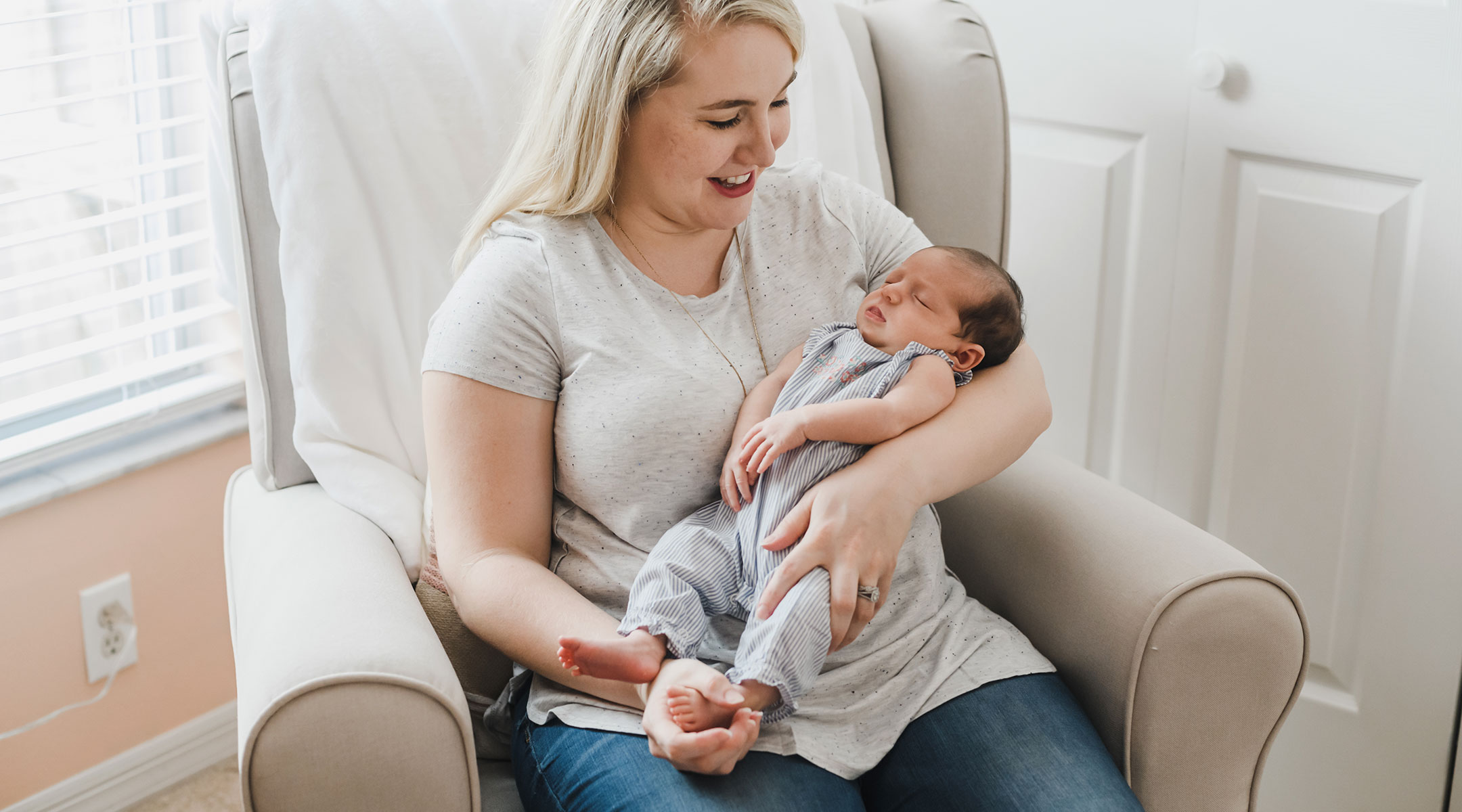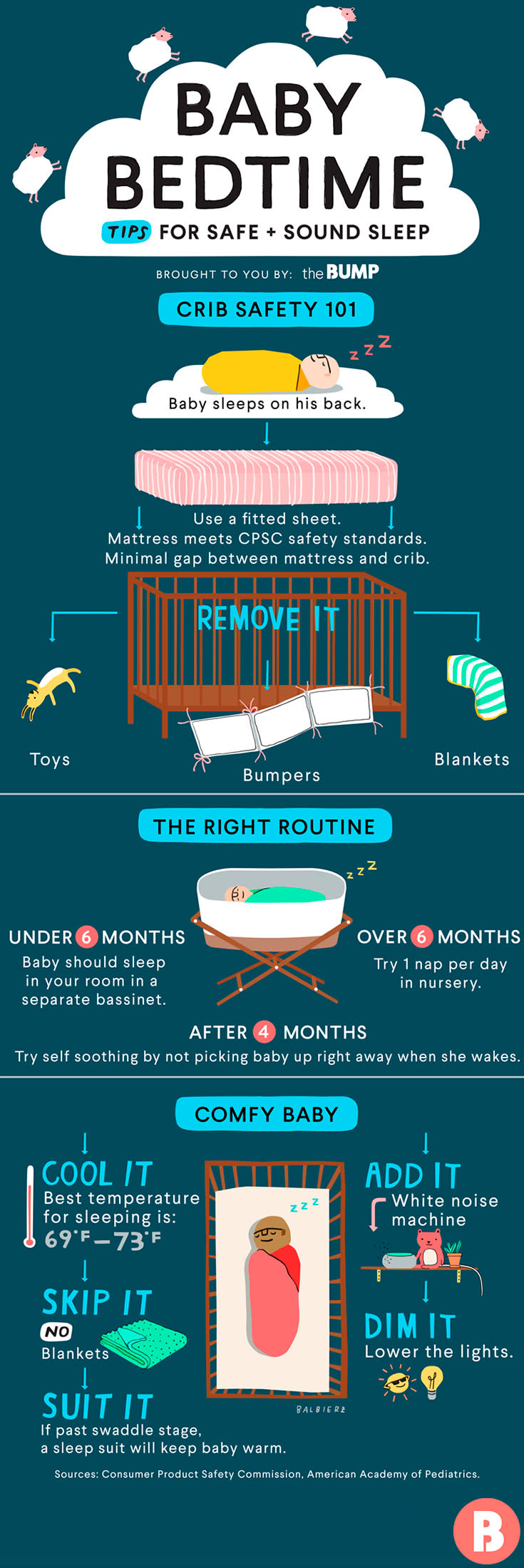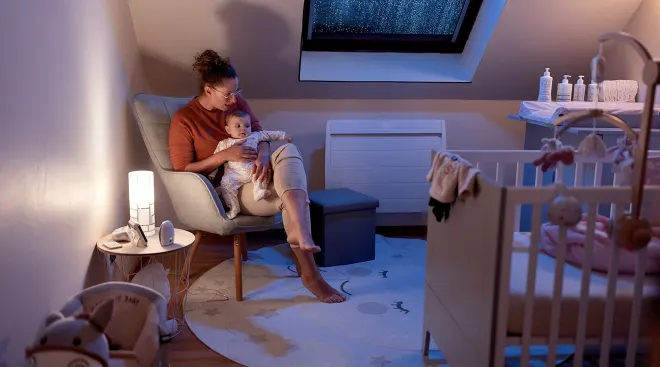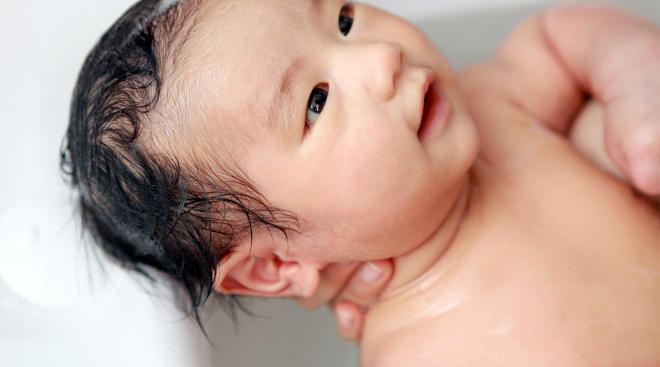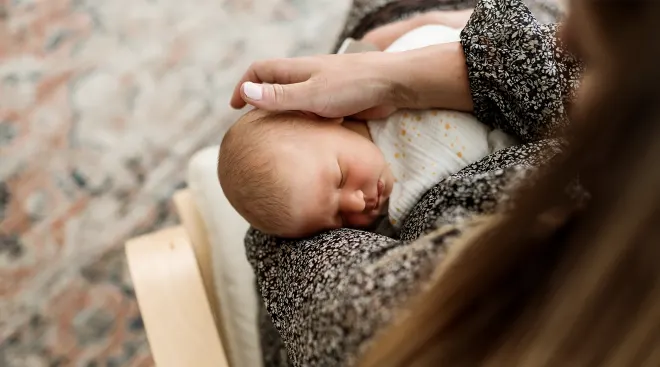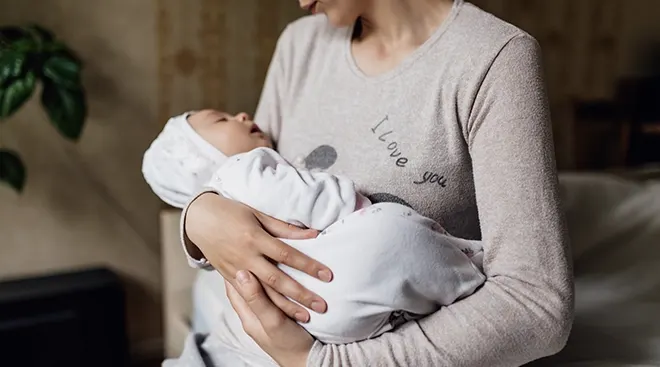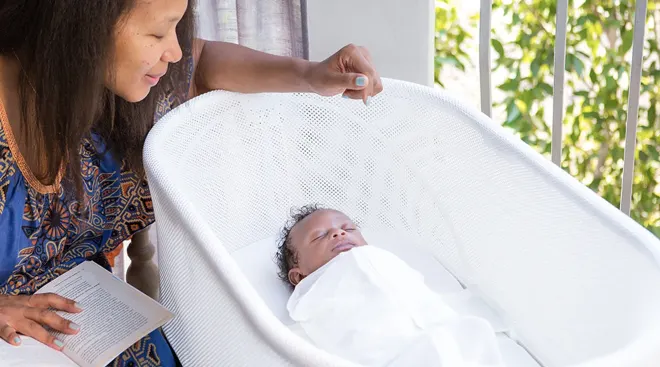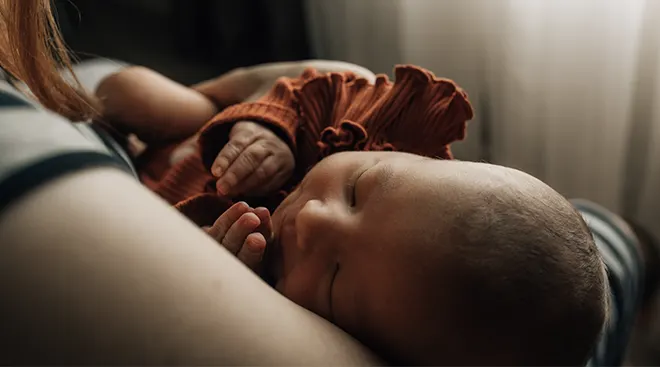Tips for How to Get Baby to Sleep
For most new parents, it’s the eternal question: How to get baby to sleep? When it comes to putting baby down to sleep—and helping baby stay asleep—it can feel like mission impossible sometimes, especially in those first few days, weeks or even months with your newborn. That’s because no two babies are exactly alike, and there’s no one-size-fits-all strategy when it comes to how to get baby to sleep at night. Nevertheless, there are some general recommendations that will help at least set the stage for good sleep. Read on for expert advice on some practical ways to up baby’s (and your) chances of catching some ZZZs.
“Infants tend to sleep a lot, typically 14 to 18 hours a day,” says Edward Kulich, MD, a New York City-based concierge house call pediatrician and baby sleep consultant. It can take several weeks—or months—before baby’s sleep settles into a pattern. In the early days, Kulich notes, “schedules are erratic, since babies have a small stomach and can’t go more than one to four hours without eating.” But by 3 months old, he says, baby will “tend to get into more of a rhythm, usually taking three naps a day, and some babies will sleep through the night.”
He defines sleeping through the night as baby getting 7 to 12 consecutive hours of shuteye—which is a dream stretch for any new parent. But how do you and baby get to that point? “Routine is key,” Kulich says. “Consistency above all. Many methods will work, but no method will work unless everyone in the household applies it consistently.”
As baby grows and becomes more aware of their surroundings, it’s easy for them to cross that line between cautiously curious and decidedly overstimulated. In the first months of life, “an infant’s social, emotional and intellectual skills are slowly maturing,” says James McKenna, PhD, a professor of anthropology at the University of Notre Dame and director of the Mother-Baby Behavioral Sleep Laboratory. “During these critical developmental years, new daily experiences can cause baby to construct new things to worry about, to be aware of, to think about and to be afraid of.”
In other words, just like for Mom (or Dad), baby’s daytime stressors can impact nighttime sleep. And that means baby craves the comfort only you can provide. So what can you do to help baby get some ZZZs? Here are some guidelines for how to get baby to sleep easier.
Clear the clutter
Designate the nursery as a room for sleep, not play. Keep the area around the crib free of toys and other fun knick knacks. “Crib distractions confuse baby,” says Conner Herman, a sleep expert and co-founder of the baby sleep consultancy Dream Team Baby. “They’ll make them wonder, ‘Is this a playpen, or is it a place to sleep?’”
Room-share—but don’t bed-share
Safe sleep guidelines from the American Academy of Pediatrics recommend baby sleeps in the same room as you for at least the first six months (and up to the first year) of life—but not in the same bed. Sleeping in the same room encourages breastfeeding, is known to help baby sleep for longer stretches and can also help reduce the risks of Sudden Infant Death Syndrome (SIDS). “Having parents in proximity…is immensely proactive and protective,” McKenna says, noting that the closeness helps regulate baby’s breathing, temperature and nervous system reactions.
Keep baby cool
Baby sleeps best when the temperature is consistent and cool—between 69 and 73 degrees Fahrenheit. That also means baby shouldn’t be over-bundled: Instead of heavy clothes, dress baby in layers, so you can regulate baby’s temperature and comfort levels accordingly. “Baby should wear what you have on to be comfortable, plus one layer,” Kulich says, like a sleep sack. “If baby feels cold then they should have more clothes on. If they’re sweating, they may be over-bundled.” Putting your crib in the right spot is also key. “Pick a location that isn’t in the direct pathway of your air-conditioning or heating vents,” Herman says, since sudden temperature changes will startle and disturb baby. The crib should also be placed away from windows to protect your little one from drafts and outside noise.
Try swaddling
In the early months of life, swaddling may help baby sleep more soundly and for longer stretches. “It works for some babies in the first several months, but sometimes not for others,” Kulich says. “If your baby responds to it, great. If not, no big deal.” And know that what works now might not tomorrow. “It’s okay to stop swaddling when a baby that previously liked it no longer responds to it,” Kulich says. “Infant sleep, like childhood, is a moving target.”
Soothe with sound
What baby hears (or doesn’t) is just as important as what they do or don’t see. Pick up a white noise machine, which can help baby sleep better by canceling out house noise, cars and other distracting sounds. Baby will begin to associate the constant and consistent sound with sleep. Some white-noise machines have options to play lullabies and nature sounds, but simple white noise is fine—it’ll bring baby back to being in the womb, and really, what’s more soothing than memories of mommy’s belly? Look for a portable machine so you can recreate the sounds of the nursery when you’re away from home. Just don’t turn it so high that it could hurt baby’s sensitive ears. “Keep the machine on the lowest setting in the far corner of the room,” Kulich says.
Dim the lights
Light signals daytime to baby, so blocking out the sun will help keep them snoozing. In fact, cut out all the light you can. That includes the night-light—babies aren’t likely to fear the dark until at least 18 months. If baby is a nighttime nurser, attach a dimmer switch to a lamp and turn it on and off slowly for nighttime feedings.
Let baby self-soothe
Some babies learn how to fall back asleep on their own, while others may need some nudging with the help of sleep training. This could happen at any age past 4 months. There are many different sleep training methods, but Kulich encourages parents to refrain from picking baby up to soothe them and then putting them back to bed. “A baby needs to fall asleep on their own, in the crib, not to be rocked to sleep and then transferred to the crib,” he says. “Give baby some time to settle down. Don’t rush in, and try not to pick them up.”
Start separating
Once baby is beyond the six-month mark, you can work on settling them into their own room. Kira Ryan, co-founder of Dream Team Baby and co-author of The Dream Sleeper: A Three-Part Plan for Getting Your Baby to Love Sleep, recommends putting baby in their own room for at least one nap a day to start. “This gets baby acclimated to their room, so when it’s time to move in there, it’s not a total change.” A daily solo nap also helps baby (and you) get used to being apart—these little breaks are healthy and necessary. Even if baby sleeps in your room, Ryan recommends putting up a screen or partition for separation. “If baby wakes up during the night and sees you, it’s easy for them to rely on you to fall back asleep,” Ryan says. And you’ll all be happy later if baby is able to put themselves back to bed.
Make a plan—and stick to it!
Agree with your partner about what you’ll do when baby wakes in the middle of the night and who will do it. “The number one way to fail is not to have plan,” Ryan says. “Set a date on calendar to start, and be consistent. That’ll make it so much easier for baby to learn.”
Our infographic details sleep safety tips and advice for baby’s best sleep:
Updated February 2020
Expert bios:
Edward Kulich, MD, FAAP, is a New York City-based concierge house call pediatrician and baby sleep consultant. He earned his medical degree from St. George’s University and is the author of The Best Baby Sleep Book.
James McKenna, PhD, is a professor of anthropology at the University of Notre Dame and director of the Mother-Baby Behavioral Sleep Laboratory.
Conner Herman is a sleep expert and co-founder and CEO of the baby sleep consultancy Dream Team Baby.
Kira Ryan is the co-founder and CMO of Dream Team Baby and co-author of The Dream Sleeper: A Three-Part Plan for Getting Your Baby to Love Sleep.
Please note: The Bump and the materials and information it contains are not intended to, and do not constitute, medical or other health advice or diagnosis and should not be used as such. You should always consult with a qualified physician or health professional about your specific circumstances.
Plus, more from The Bump:
Navigate forward to interact with the calendar and select a date. Press the question mark key to get the keyboard shortcuts for changing dates.
































